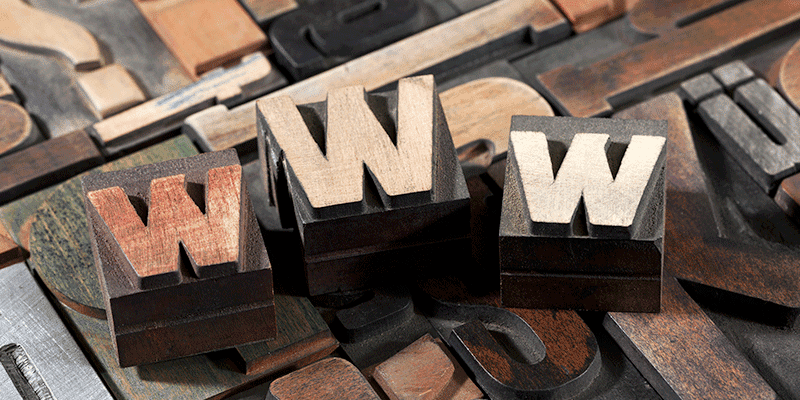
Re-emergence of Wide Web Printing

Abstract
The packaging printing market, expected to reach $484 billion by 2023, is witnessing a shift towards wide web printing once again. A decade ago, the printing industry had moved away from wide to narrow web printing to serve the printing needs of product diversification of multibands. The product differentiation added multiple product portfolios into a single product division. The increased product portfolio demanded different printing on the packages. Differentiated packaging design in accordance with the differentiated products led to shorter printing runs. This, in turn, increased the demand for narrow web printing. Half a decade ago, the preference for narrow web was taken over by mid web, as narrow web printing was costlier and its low speed affected the overall productivity of the printed packages. Today, with improved technology, wide web printing is again catching the interest of the industry with its capabilities overtaking both the narrow and the mid-web printing. The packaging printing industry is expected to grow at a CAGR of 5-6 percent till 2023. Flexographic and rotogravure printing have endorsed wide-web printing in recent times. This article intends to analyze the different web printing types and conclude if the switch really makes sense. The article also addresses if one can expect digital printing to switch to wide web.
Packaging Printing Market Overview
Flexible packaging market was valued at $102 billion in 2017 and is expected to grow at a CAGR of 5-5.5 percent till 2023. Flexible packaging is classified into plastic packaging and paper packaging. Plastic film and film-based products, such as sachets, pouches, bags, wraps, labels, etc., are classified under plastic flexible packaging. Paper sheets, labels, pouches, and bags are categorized under paper flexible packaging. Bio plastics are seen as the replacement to plastic packaging because of its sustainability.
The flexible packaging industry uses different printing technology according to the end use requirement as highlighted below.
|
Flexographic Printing |
Rotogravure Printing |
Digital Printing |
|
Flexographic printing is used for cost effective printing on flexible packaging. |
Rotogravure printing is preferred for high-quality printing on flexible packaging. |
With reducing digital printing cost, it suits personalized and small volume prints. |
- Flexographic is a form of relief printing, where the ink from the nozzle is applied to a plate, and the print image is raised above the surface.
- Another popular printing technology, Rotogravure, is an intaglio process in which a negative image is etched onto the surface of the printing cylinder to achieve high-quality printing.
- The digital printing technique is the fastest growing technique in the global packaging printing market, with a capability to handle customized short run prints.
Classification of Printing by Web Width
|
Factor |
Narrow Web |
Mid Web |
Wide web |
Ultra-wide Web |
|
Width |
<600 mm |
600 - 1100mm |
1100 - 1800 mm |
>1800 mm |
Based on width of the web used in the printing equipment, printing is classified into narrow web, mid web, wide web and ultra wide web. The use of different web is possible across printing technologies. Narrow web printing uses the shortest web, with a width less than 600mm. Ultra wide web printing uses web with width greater than 1800mm. Mid and wide web printing falls in between the two.
Narrow web printing dominates smaller formats like sachets, labels, etc., whereas mid, wide, and ultra-wide web printing cater to similar packaging segments, such as films, pouches, bags, etc. Hence, the choice of printing on medium to larger packaging segment falls between mid, wide, and ultra-wide web printing. Different web types are analyzed below to understand the market shift towards wide web printing.
Printing Speed by Web type
|
Factor |
Narrow Web |
Mid Web |
Wide web |
Ultra-wide Web |
|
Speed |
Some 100fpm /minute |
600 – 900 fpm /minute |
900 - 1100fpm /minute |
>1100fpm /minute |
The speed of the printing equipment increases with an increase in the width of the web. Narrow web printers are the slowest and ultra-wide web printers are the fastest among the different web types.
The high-speed printing capability of wide and ultra-wide web increases the productivity of the printed package. Therefore, wide and ultra-wide web is preferred by the end-use segment considering the cost saving achieved from lower time consumed for producing printed packages.
Choice of ink solvent
|
Factor |
Narrow Web |
Mid Web |
Wide web |
Ultra-wide Web |
|
Ink Solvent Type |
Slow drying solvent |
Medium drying solvent |
Fast drying solvent |
Fast drying solvent |
Printing inks are composed of three components—pigment, binder, and solvent.
- Pigments are fine particles that act as the coloring agent of the ink.
- Binders bind the pigment and the substrate/printing surface together. Resins made of modified cellulose, acrylic, polyurethane, and modified resin are among the commonly used binders.
- Solvents dissolves the binder and keep it stable—of late, eco-solvents, such as vegetable oils are being used as sustainable solvents in printing inks.
Among the web types, ultra-wide web uses fast-drying solvent to keep up with its high-speed printing. Narrow, mid, and wide wed equipment use solvents with drying capability in accordance with their printing speed. High drying solvents help in early stacking of packages post-printing, leading to increased productivity and cost saving. Both wide and ultra-wide printing tend to use fast drying solvents and are the choice of buyers.
Choice of Ink Viscosity
|
Factor |
Narrow Web |
Mid Web |
Wide web |
Ultra-wide Web |
|
Ink Viscosity |
3 Zahn |
3-2 Zahn |
2 Zahn |
< 2 Zahn |
Highly viscous inks were the choice of narrow and mid webs, while less viscous inks were used in wide and ultra-wide web printing. Higher the viscosity of the ink, the higher is the cost of the ink. This made wide and ultra-wide web printing the choice of low-cost printing options available.
Conclusion
|
Factor |
Narrow Web |
Mid Web |
Wide web |
Ultra-wide Web |
|
Quality |
High-quality printing |
High to Medium-quality printing |
High to Medium-quality printing |
Medium to Low-quality printing |
Among the factors analyzed so far, such as printing speed, choice of solvent, ink viscosity, productivity, and cost saving capability, wide and ultra-wide web top the web types. However, quality of print plays a major role in the selection of web type.
Given below is a comparison of the web types on the quality of the printing on the packaging format.
Ultra-wide web does not have the printing quality of wide web printing, hence, it suits prints on very large formats. This makes wide web the choice for printing on medium- to large-sized packaging formats, supporting the market shift.
Adoption of wide web is prevalent in flexographic and rotogravure printing technologies. The adoption of the same in digital printing is expected to take at least another five years. The wide web digital printer recently introduced by HP communicates the beginning the wide web initiation in digital printing.
References
https://www.mordorintelligence.com/industry-reports/flexible-packaging-market-industry
https://www.smitherspira.com/industry-market-reports/printing/digital
https://www.marketsandmarkets.com/Market-Reports/packaging-printing-market-153207109.html
https://www.packageprinting.com/article/profile-wide-web-flexographic-printer-global-packaging/
Related Insights:
View All
Get more stories like this
Subscirbe for more news,updates and insights from Beroe







